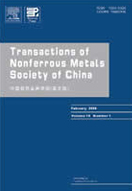Composition and microstructure characteristics
in bond area of TIG welding for high
strength ZA alloy
in bond area of TIG welding for high
strength ZA alloy
(1. College of Materials Science and Engineering,
Shandong University, Ji′nan 250061, China;
2. Institute of Ji′nan Boiler Pressure Vessel Inspection, Ji′nan 250011, China)
Shandong University, Ji′nan 250061, China;
2. Institute of Ji′nan Boiler Pressure Vessel Inspection, Ji′nan 250011, China)
Abstract: The evaporation and oxidation of zinc during the welding process was studied. The characteristics of microstructure and micro-hardness of the ZA alloy's bond area that welded by TIG were investigated by using TEM, SEM and other methods. The results show that, by using the same filler metal as the parent metal, zinc content in bond area is lower than that in the weld metal and the base metal. The main structure of the bond area is columnar dendrite, including Zn, Al4Cu9, CuTi2, Al7Cu3Mg6 phases. There are many changes of structure in the bond area. The structure near the weld is some tiny slice Zn and α-Zn. The structure near the parent metal is rather coarse but is still a little tiny than that of the parent metal. As the tiny structure of the heat affected zone has high hardness, it can strengthen the weld, and thus improve the mechanical properties of the welded joint.
Key words: ZA alloy; TIG; bond area; microstructure

